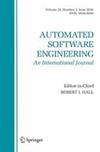Automated detection of affected libraries from vulnerability reports
Abstract
The growing reuse of third-party libraries in software supply chains increases the risk of being affected by the involved vulnerabilities. To strengthen software security, security vendors such as Snyk manage up-to-date vulnerability databases by associating reported vulnerabilities with their affected libraries, and contemporary digital organizations such as banking and software enterprises detect the third-party libraries they use if affected by these reported vulnerabilities. Existing studies focus on automating the detection process but make few efforts on detecting newly affected libraries, although new libraries (previously healthy) are constantly disclosed to be affected by new vulnerabilities. Moreover, existing studies do not seriously consider digital organizations’ concerns only about the libraries they use. In this paper, we propose an approach LibAlarm to address these challenges. We implement LibAlarm as a large language model-powered approach and compare it with the baseline approaches from multiple perspectives. Our experimental evaluation using 16,238 NVD reports indicates that LibAlarm improves the F1 by over 14% compared with baselines and detects over 40% newly affected libraries. For contemporary digital organizations, LibAlarm performs better than the baseline approaches with the F1 above 70% and the reduced false alarm ratio to 20%. Our case analysis using 540 NVD reports and 20 projects from Microsoft and Google demonstrates the effectiveness of LibAlarm. These results indicate that LibAlarm can help security vendors and digital organizations detect affected libraries from vulnerability reports.

 求助内容:
求助内容: 应助结果提醒方式:
应助结果提醒方式:


